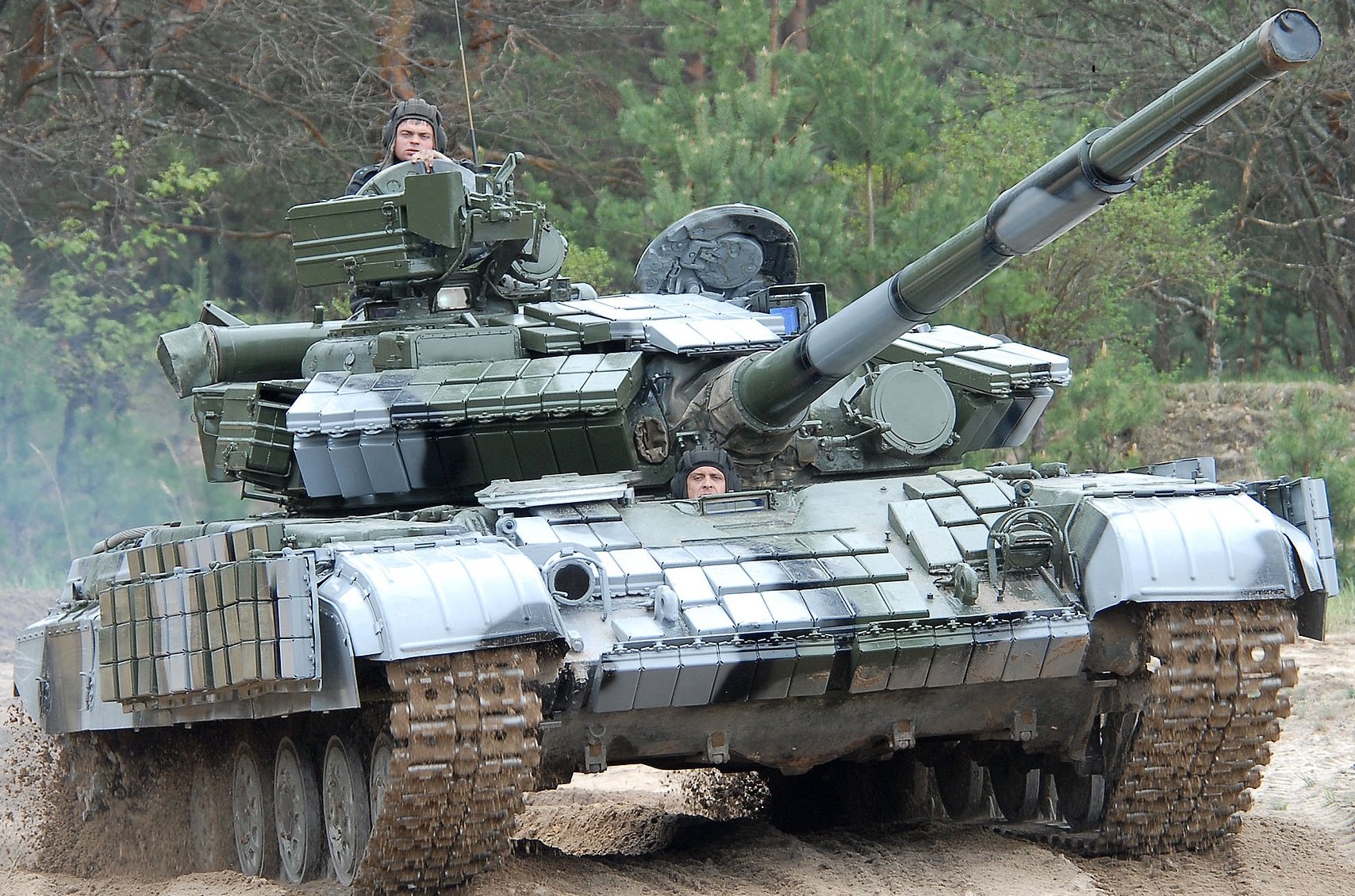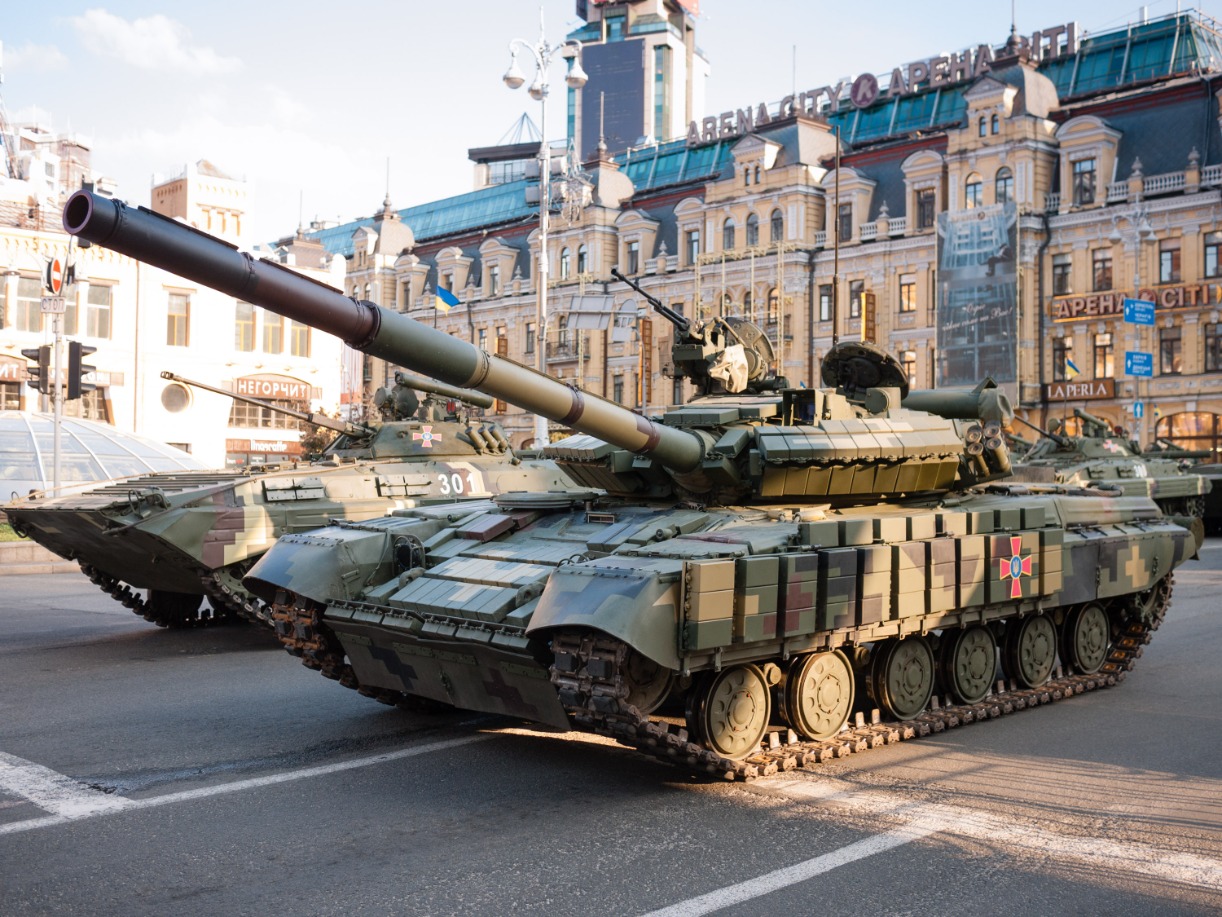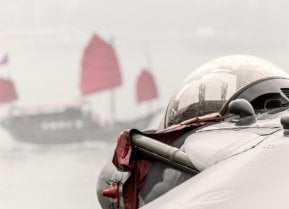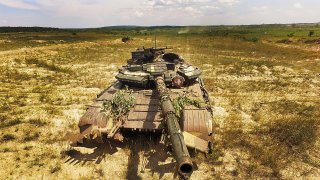The Dinosaur Returns: Russia’s Ancient T-64 Tank Is Fighting in Ukraine
The T-64 tank, a product of the Cold War, has been resurrected by Russia for use in the ongoing Ukraine War. Developed in the late 1950s and introduced in the 1960s, the T-64 was a significant advancement in Soviet tank design, featuring composite armor and a 125 mm smoothbore main gun.
Summary and Key Points: The T-64 tank, a product of the Cold War, has been resurrected by Russia for use in the ongoing Ukraine War. Developed in the late 1950s and introduced in the 1960s, the T-64 was a significant advancement in Soviet tank design, featuring composite armor and a 125 mm smoothbore main gun.

-Despite its age, the T-64 remains a formidable weapon on the battlefield, capable of firing a variety of ammunition types and fitted with smoke grenade launchers and Explosive Reactive Armor.
-Russia's decision to deploy these older, cheaper, and more easily replaceable tanks highlights a strategic shift in response to the challenges of modern warfare and the effectiveness of Ukrainian tactics.
The T-64 Tank Reboot in Ukraine War
A product of the Cold War, the T-64 tank is a dinosaur by today’s standards. It was first developed in the late 1950s by the Soviet Union and introduced more than a decade later, in the 1960s. The T-64 saw extended service with the Soviet Red Army and other Warsaw Pact states until the end of the Cold War.
As the Ukraine War rages, the Russians are pulling the old tanks out of mothballs and sending them to the frontlines. In fact, some reports have stated that Moscow means to make the T-64 its primary tank for the duration of the Ukraine War.
This, of course, has sent the usual suspects caterwauling about how Russia is losing. Another takeaway is simply that Russia has a massive arsenal of platforms and they’re using them as needed. In a war that most people assumed would be quick and decided by advanced weapons platforms such as the T-14 Armata, the real winners have been older Russian systems, such as the T-72.
Russia’s T-64 was designed to be a more advanced successor to the T-54/55 and T-62 tanks that defined the Red Army in the 1940s. In fact, it was the first Main Battle Tank to feature composite armor design, which provided better protection against kinetic energy penetrators and shaped charge warheads. The tanks also had a low-profile design, with a smaller turret and hull compared to its predecessors, making it a harder target to hit.
Capabilities of T-64
In terms of weapons, the T-64 is equipped with a 125 mm smoothbore main gun, capable of firing a variety of ammunition types, including Armor-Piercing Fin-Stabilized Discarding Sabot rounds. This old tank can fire High-Explosive Anti-Tank rounds, and High-Explosive rounds. It also has a coaxial 7.62 mm machine gun and a roof-mounted 12.7 mm machine gun for anti-aircraft defense.
The T-64 has a range of 500 kilometers on roads and 300 km off-road (which is likely one reason that the T-64 is so appealing to the Russians, who have been stymied at times by the muddy battlefields of Ukraine). A T-64 can travel at a maximum road speed of 60 kilometers per hour and an off-road speed of 45 km/hr.
And there are many T-64s in existence. One estimate had these relatively cheap, easy to mass produce tanks numbering anywhere between 12,000 to 15,000 units. It was widely exported to Warsaw Pact states, and to other nations such as Iraq, Syria, and Yemen. They’ve been basically everywhere for a long time.

In terms of defenses, on top of its composite design, the T-64 has smoke grenade launchers that help to establish a smokescreen while in combat. This capability makes it harder for enemy units to see and target the tank while fighting. Additionally, the T-64 can be fitted with Explosive Reactive Armor to provide additional protection against shaped charge warheads.
Don’t Underestimate the T-64
Russia’s T-64 MBT was a significant advancement in Soviet tank design during the Cold War.
Today, it is being reused against Ukraine. And this MBT is not necessarily useless there.
In a war that has seen wildly expensive Russian tanks destroyed by cheap Ukrainian drone swarms, it makes sense that Moscow would be reassessing their offensives by deploying older, cheaper, and easier to replace and maintain systems like the T-64. And the T-64’s features make it a dangerous machine, regardless of its age.
Author Experience and Expertise: Brandon J. Weichert
Brandon J. Weichert, a National Interest national security analyst, is a former Congressional staffer and geopolitical analyst who is a contributor at The Washington Times, the Asia Times, and The-Pipeline. He is the author of Winning Space: How America Remains a Superpower, Biohacked: China’s Race to Control Life, and The Shadow War: Iran’s Quest for Supremacy. His next book, A Disaster of Our Own Making: How the West Lost Ukraine, is due October 22 from Encounter Books. Weichert can be followed via Twitter @WeTheBrandon.
All images are Creative Commons or Shutterstock.
From the Vault
Russia Freaked Out: Why the U.S. Navy 'Unretired' the Iowa-Class Battleships
Battleship vs. Battlecruiser: Iowa-Class vs. Russia's Kirov-Class (Who Wins?)


